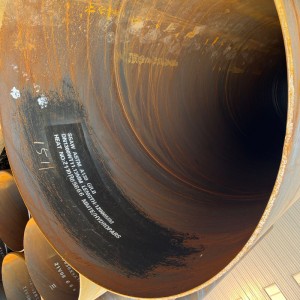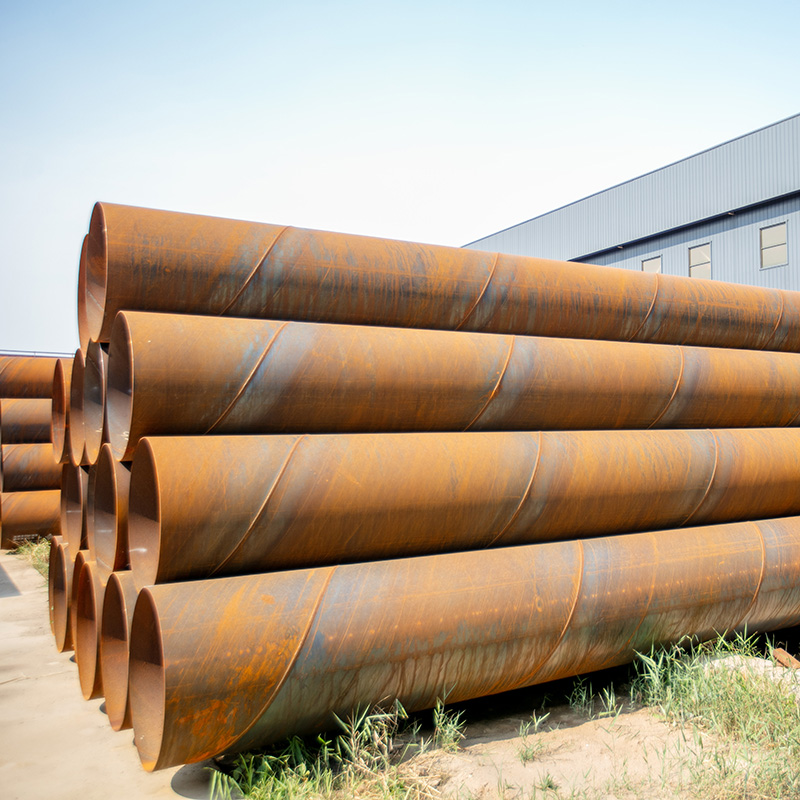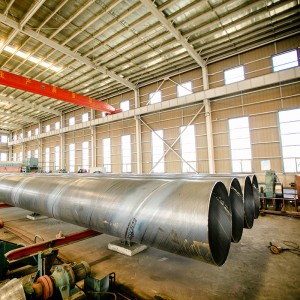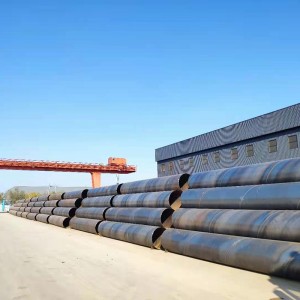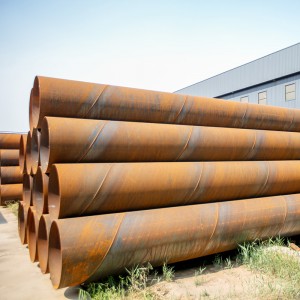Spiral Welded Steel Pipe For Underground Natural Gas Pipe
Introduce:
Underground natural gas pipelines play a vital role in delivering this precious resource to homes, businesses and industry. To ensure the safety and efficiency of these pipelines, it is critical to use the correct materials and welding processes during construction. We will explore the importance of spiral welded steel pipe and the importance of following proper pipe welding procedures when working with underground natural gas pipe.
Spiral welded pipe:
Spiral welded pipe is popular in the construction of underground natural gas pipelines because of its inherent strength and durability. These pipes are manufactured by bending a continuous strip of steel into a spiral shape and then welding it along the seams. The result is pipes with strong, sealed joints that can withstand significant external pressures and adapt to ground movements. This unique structure makes spiral welded steel pipe ideal for underground pipelines where stability is critical.
Mechanical Property
| Grade A | Grade B | Grade C | Grade D | Grade E | |
| Yield strength, min, Mpa(KSI) | 330(48) | 415(60) | 415(60) | 415(60) | 445(66) |
| Tensile strength, min, Mpa(KSI) | 205(30) | 240(35) | 290(42) | 315(46) | 360(52) |
Chemical Composition
|
Element |
Composition, Max, % |
||||
|
Grade A |
Grade B |
Grade C |
Grade D |
Grade E |
|
|
Carbon |
0.25 |
0.26 |
0.28 |
0.30 |
0.30 |
|
Manganese |
1.00 |
1.00 |
1.20 |
1.30 |
1.40 |
|
Phosphorus |
0.035 |
0.035 |
0.035 |
0.035 |
0.035 |
|
Sulfur |
0.035 |
0.035 |
0.035 |
0.035 |
0.035 |
Hydrostatic Test
Each length of pipe shall be tested by the manufacturer to a hydrostatic pressure that will produce in the pipe wall a stress of not less than 60% of the specified minimum yield strength at room temperature. The pressure shall be determined by the following equation:
P=2St/D
Permissible Variations In Weights and Dimensions
Each length of pipe shall be weighed separately and its weight shall not vary more than 10% over or 5.5% under its theoretical weight, calculated using its length and its weight per unit length.
The outside diameter shall not vary more than ±1% from the specified nominal outside diameter.
Wall thickness at any point shall not more than 12.5% under the specified wall thickness.
Length
Single random lengths: 16 to 25ft(4.88 to 7.62m)
Double random lengths: over 25ft to 35ft(7.62 to 10.67m)
Uniform lengths: permissible variation ±1in
Ends
Pipe piles shall be furnished with plain ends, and the burrs at the ends shall be removed
When the pipe end specified to be bevel ends, the angle shall be 30 to 35 degree
Pipe welding procedures:
Proper pipe welding procedures are critical to the durability and safety of underground natural gas pipelines. Here are a few important aspects to consider:
1. Welder qualifications: Qualified and experienced welders should be hired, ensuring they have the necessary certifications and expertise to handle the specific welding procedures required for natural gas pipelines. This helps minimize the risk of welding defects and potential leaks.
2. Joint preparation and cleaning: Proper joint preparation is essential before welding. This includes removing any dirt, debris or contaminants that may adversely affect the integrity of the weld. Additionally, beveling the pipe edges helps create a stronger welded joint.
3. Welding techniques and parameters: Correct welding techniques and parameters must be followed to obtain high-quality welds. The welding process should consider factors such as pipe thickness, welding position, gas composition, etc. It is recommended to use automated welding processes such as gas metal arc welding (GMAW) or submerged arc welding (SAW) to ensure consistent results and minimize human error.
4. Inspection and Testing: Thorough inspection and testing of the weld is critical to confirm its quality and integrity. Technologies such as non-destructive testing (NDT), including X-ray or ultrasonic testing, can detect any potential defects that could compromise the long-term reliability of the pipeline.
In conclusion:
Construction of underground natural gas pipelines using spiral welded steel pipe requires compliance with proper pipeline welding procedures. By hiring qualified welders, carefully preparing joints, following proper welding techniques, and performing thorough inspections, we can ensure the safety, durability, and efficiency of these pipes. Through careful attention to detail in the welding process, we can confidently deliver natural gas to meet the energy needs of our communities while prioritizing environmental well-being and public safety.


